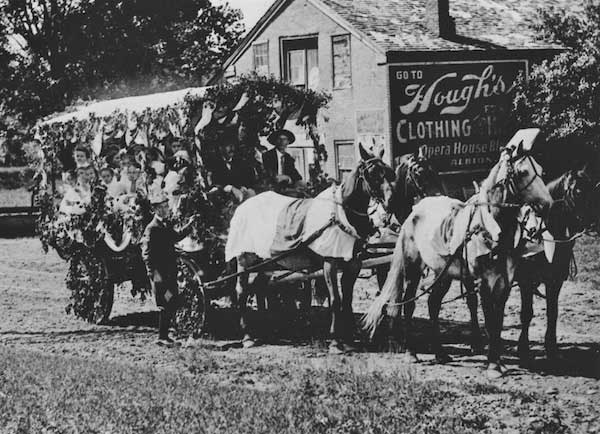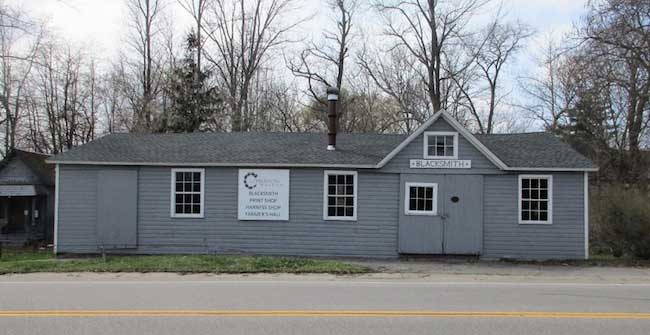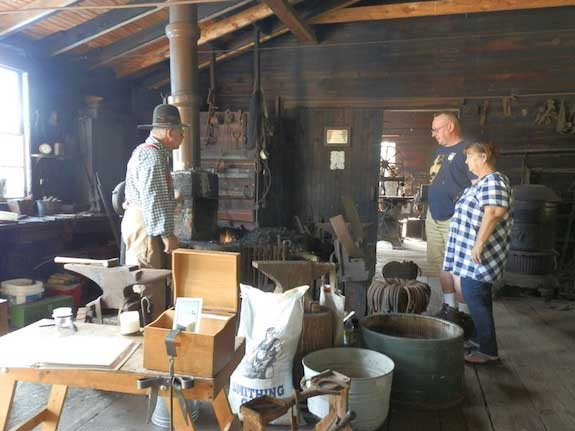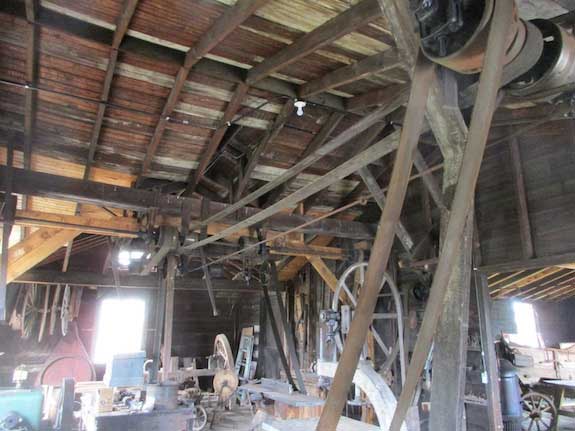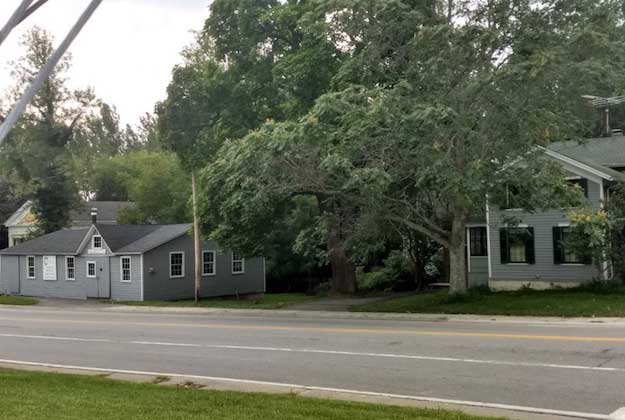Historic Childs: Blacksmith shop was a vital business in Gaines hamlet
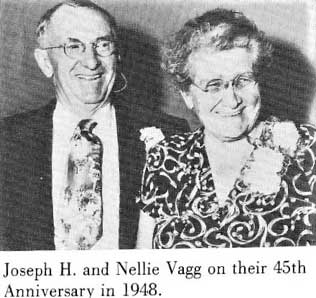
By Erin Anheier, President of Cobblestone Society
Two cherished and respected former residents of Childs were Joseph and Nellie Vagg. They lived in the house on the southwest corner of the intersection of routes 104 and 98.
Joseph was the last blacksmith plying his trade on Ridge Road.
The Vaggs moved to Childs in 1909 and lived there the rest of their lives. When they purchased their home, it included the brick blacksmith shop that sat just south of the house.
The blacksmith shop is pictured here in the background of a photo taken at the Gaines Centennial parade. Joseph had worked as a blacksmith with Nellie’s brother in Elba and built a successful business here. However, tragedy struck as the brick building was destroyed by fire in 1921.
Vagg’s blacksmith shop was so vital to the community that the local farmers left their own work to help build a new shop. This included hauling stones for the foundation and rerouting part of Proctor’s Brook to make room for the new structure. Today the 1922 shop is a major exhibit at the Cobblestone Museum, graciously donated by Nellie after Joseph’s death.
The forge was salvaged from the fire and installed in the new shop. Joseph worked here until 1956. The forge is still in use today when the Cobblestone Museum holds living history demonstrations, here presented by Henry Ott.
As the automotive age was dawning, horses were fewer and there was reduced need for a blacksmith, so a wood working shop was included in the new building. It was powered by a 1920 International Model 650 hit or miss engine and a complicated series of leather belts overhead.
These belts delivered power to saws, planers, lathe and drill press which are still in the building. There are no safety guards on any of the equipment.
While the shop has been part of the museum, the Vagg’s house continued life as a private residence, but that is soon to change.




























